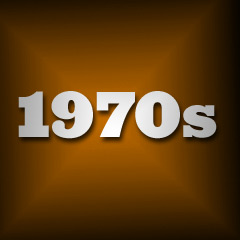
|
![]()
Greatest Films of the 1970s
1970 | 1971 | 1972 | 1973 | 1974 | 1975 | 1976 | 1977 | 1978 | 1979
Title Screen Film Genre(s), Title, Year, (Country), Length, Director, Description 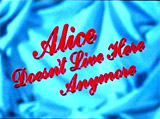

Alice Doesn't Live Here Anymore (1974), 112 minutes, D: Martin Scorsese
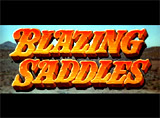


Blazing Saddles (1974), 93 minutes, D: Mel Brooks
The iconoclastic, not-politically-correct western was one of director Mel Brooks' funniest, most successful and most popular films. It was an unsubtle spoof or parody of all the cliches from the time-honored genre of westerns. Brooks' third feature film tagline blurb advertised: "Blazing Saddles...or never give a saga an even break!" The crude, racist and sexist film with toilet humor (the infamous bean-eating campfire scene) and foul language included the main elements of any western - a dance-hall girl, a gunslinger, a sheriff, a town full of pure folk, and more, but it twisted them around. In the small frontier town of Rock Ridge (with all the racist townspeople named Johnson) in the 1870s, pardoned black railroad worker Bart (Cleavon Little) was appointed by dim-witted and sex-obsessed Governor William J. Le Petomane (Mel Brooks) as the new Sheriff. In cahoots was evil and corrupt State Attorney General Hedley Lamarr (Harvey Korman) whose plot was to scare off the townsfolk, replace them with his own thugs, led by villainous Taggart (Slim Pickens), and complete a cheap land grab for a railroad route. Naive Bart joined with drunken "Waco Kid" gunslinger Jim (Gene Wilder) to save the town. There was also German seductress-for-hire Lili von Shtupp (Madeline Kahn), a spoof of Marlene Dietrich in Destry Rides Again (1939). In the absurdist finale, the action broke through the "fourth wall" into the WB studios, onto a film set with Buddy Bizarre (Dom DeLuise) directing a musical, then into the studio commissary for a pie fight, and onto the streets of Burbank and the landmark Grauman Chinese Theatre in Hollywood.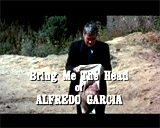




Bring Me the Head of Alfredo Garcia (1974, US/Mex.), 112 minutes, D: Sam Peckinpah




Chinatown (1974), 131 minutes, D: Roman Polanski
Atmospheric, subtly-paced, superbly-made neo-noir mystery about a hard-nosed detective uncovering urban corruption in late 1930's Los Angeles. World-weary gumshoe Jake Gittes (Jack Nicholson), who specialized in adultery cases, took on Evelyn Mulwray (Faye Dunaway) as a client. He was hired by the recently-widowed woman to investigate the infidelities of her alleged husband, the water commissioner for the drought-stricken city. As the film-noir plot unfolded, the detective got in way over his head in a case involving murder, the illegal diversion of water to artificially deflate land prices, fraudulent and corrupt politicians including sinister millionaire Noah Cross (John Huston) grabbing up land, and a prominent family's scandalous, long-hidden dark secret. He uncovered scandal under many layers, facades and networks of corruption, conspiracy and deception. Nicholson's multi-faceted performance struck a responsive chord after the scandalous Watergate era of the early 1970s. He was masterful as he flippantly and self-confidently offered pat explanations for the deeply-flowing corruption he unearthed, and then found that he had to continually revise his inaccurate pronouncements and backtrack, after uncovering further evidence. His transgressive snooping was symbolized throughout the film by a large bandage on his sliced nose, after it was slashed by a punk (director Roman Polanski in a cameo role). After original, complex plot twists, the film ended in an unsettling finale in the 'Chinatown' section of the city - a state of mind where the law was ineffectual. Gittes found himself impotent and powerless to prevent the inevitable tragedy that he had exposed.


The Conversation (1974), 113 minutes, D: Francis Ford Coppola
A brilliant thriller and murder mystery that was made during the Watergate Era, and coming at the height of Coppola's fame for his two Godfather films. One of the best films of the 70s. A professional, reclusive, alienated, and paranoid surveillance expert Harry Caul (Gene Hackman), assisted by Stan (John Cazale) is hired by the 'director' (Robert Duvall in a cameo) of an anonymous business, in a seemingly-routine job, to secretly wiretap the conversations of two employees - an unfaithful wife and her lover (Cindy Williams and Frederic Forrest). After repeatedly playing back the tape, he realizes that he has captured a terrifying conversation with clues about an impending tragedy - a death sentence. He feels compelled to intercede and circumvent fate with disastrous consequences.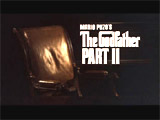

The Godfather (Part II) (1974), 200 minutes, D: Francis Ford Coppola
The continuing saga of a Mafia family and dynasty, one of the few sequels in film history that is considered superior to the original. This outstanding, Best Picture-winning film continues the first film and retraces the Corleone Family's founding by the young Vito Corleone (Robert De Niro), who immigrates to America from his native Sicily at the turn of the century and maneuvers his family to power in the ghetto of Little Italy. It also shows the maintenance of the family by young Michael (Al Pacino), Vito's son, as he ages and confronts a second generation of criminal and family affairs in Vegas, Cuba, and in a Senate hearing on organized crime. After eliminating all rivals and enemies, he is a brooding character, alienated from his wife (Diane Keaton), and the murderer of own brother Fredo (John Cazale).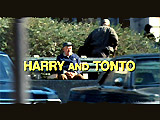

Harry and Tonto (1974), 115 minutes, D: Paul Mazursky
A road film starring Best Actor-winning Art Carney as elderly widower and retired teacher Harry, a New Yorker facing the loss of his apartment building. He struck out from his Upper West Side home to travel cross country to find a new home, with his beloved feline pet Tonto.

Lenny (1974), 111 minutes, D: Bob Fosse
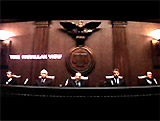

The Parallax View (1974), 102 minutes, D: Alan J. Pakula
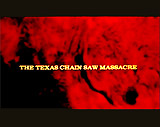

The Texas Chainsaw Massacre (1974), 83 minutes, D: Tobe Hooper


That's Entertainment! (1974), 120 minutes, D: Jack Haley, Jr.
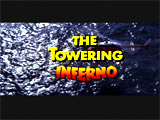

The Towering Inferno (1974), 165 minutes, D: Irwin Allen, John Guillermin
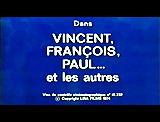
Vincent, François, Paul...and the Others (1974, Fr./It.) (aka Vincent, François, Paul... et les autres), 118 minutes, D: Claude Sautet
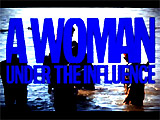
A Woman Under the Influence (1974), 155 minutes, D: John Cassavetes
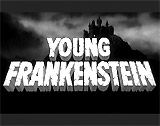


Young Frankenstein (1974), 106 minutes, D: Mel Brooks
One of writer/producer/director Mel Brooks' best films - a nostalgic, hilarious spoof-tribute to classic horror films (with its authentic black and white cinematography and production design/set decoration), and in particular, of Mary Shelley's classic novel. This was his follow-up film to his westerns-spoof (Blazing Saddles (1974)) and one of Mel Brooks' many spoofs or parodies of various genres and sub-genres. The main character, young brain surgeon and med-school professor, Dr. Frederick Frankenstein (Gene Wilder) is in denial about his heritage, and must continually and defiantly correct people about the pronunciation of his name: "That's Fronk-en-steen." The reluctant scientist returns to Transylvania when he inherits his infamous grandfather Victor's castle. At the town's train station, he is greeted by bug-eyed Igor ("That's Eye-gor") (Marty Feldman) with a shifting hunchback, and a pretty, dim-witted, voluptuous assistant from the village named Inga (Teri Garr). At the castle, he is introduced to old housekeeper Frau Bleucher (Cloris Leachman) who causes horses to whinny. He is inspired to finish his ancestor's mad work to create life after he finds the journal book/diary "How I Did It" in his private library. His sexually-repressed, spoiled fiancee Elizabeth (Madeline Kahn) later joins him as he repeats his grandfather's famous experiments and recreates the Monster (Peter Boyle). The film ranges from slapstick and farce to dirty, bawdy humor to irreverent satire (e.g., a parody of the little girl drowning scene that was taken from Frankenstein (1931), and the blind hermit scene from The Bride of Frankenstein (1935) with Gene Hackman in a cameo role.) Some of the more memorable images are Elizabeth's encounter with the Monster and his "enormous schwanstucker" (singing "O Sweet Mystery of Life"), and the soft-shoe dancing and singing duet of "Puttin' on the Ritz" by the Monster and creator Frederick, complete with tuxedos, canes, and top hats.